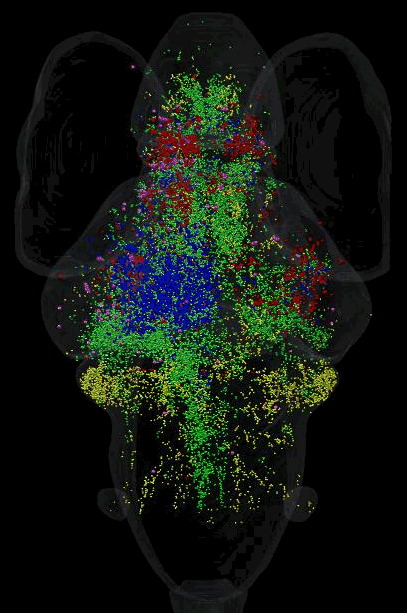To understand how neurons work together to process information, scientists can monitor how connected groups of neurons across the brain activate in response to a stimulus. Advances in technology have only recently enabled researchers to see the activity of networks of neurons in live animals, in real time.
“It has always been hard to study these networks, because you have to observe the activity of thousands of neurons at the same time,” says Associate Professor Ethan Scott, from UQ’s Queensland Brain Institute.

His work focuses on the circuits and networks of neurons responsible for animals’ ability to sense the world and respond with appropriate behaviours. His team studies the tiny transparent zebrafish, peering into its simple brain using a cutting-edge technology called light-sheet microscopy to show nearly all of the neurons in their brains at once.
To understand how zebrafish make sense of their world, the team records brain-wide activity while presenting images, sound, and motion stimuli to the fish. Each stimulus activates different neurons, so the scientists can see how different networks are engaged to process those stimuli.
The scientists can then use optogenetics to stimulate neurons with light in very precise ways. They can customise the light patterns projected into the animals’ brains, like a hologram, activating the exact neurons they think are responsible for visual, auditory, and vestibular processing (balance) and studying the fishes’ responses.

